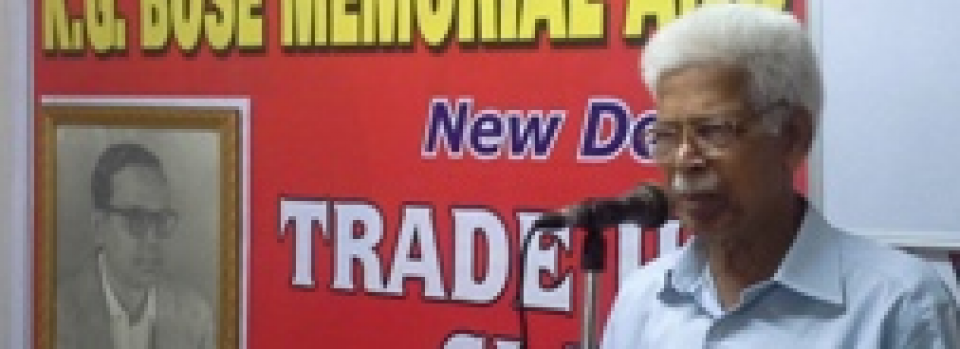All India BSNL – DOT Pensioners Association, the militant organisation of BSNL-DOT pensioners, has completed 12 years of its fruitful existence on 21st October 2021, which day was celebrated by its branches, districts and circles all over India in a big way. It was a day of enthusiasm. Association flag was hoisted, demonstrations were held, veteran and senior leaders and workers were felicitated. Food supplied to old age homes in many places. Despite Covid situation, the day was celebrated, of course, keeping up Covid protocol.
It will be appropriate at this juncture to remember the history of pension and the pensioners movement in India.
Legacy of Pension in India.
Posts, Railways and Telegraphs were the first organised services in British India. Posts were started by the end of 18th century, while Railways and Telegraphs were introduced in 1854. British effectively used the Railways and Telegraphs in moving military and conveying messages to its units to suppress the First War of Independence (1957), which was called Sepoy Mutiny by them.
British rulers started pension system in India in 1871, which was of a contributory nature. The Royal Commission (1925) recommended that it should be statutory and based on the length of service of the pensioner. After getting Independence, the Family Pension System was introduced in the 1950s.
The Central Civil Services (Pension) Rules 1972 was introduced based on Article 148(4) and 309 of the Constitution of India. A maximum upper limit for pension was fixed, which was increased during the years. A liberalised Pension Scheme was introduced along with increasing the maximum pension to Rs. 1,500. But a cut off date was fixed, thus depriving pensioners retired before that date to the increased pension. Two retired officers, Shri D.S.Nakara, a retired officer of Defence Ministry and Rear Admiral (Retd) Sathyendra Singh of Indian Navy, filed cases in Supreme Court against this injustice. Shri H.D.Shourie of the Common Cause, an NGO of Delhi, also joined and gave financial support in conducting the case.
(I would like to mention an interesting incident in the 1960s, how the Family Pension was made available to the family of one Line Inspector at Calicut. When the information about the introduction of the Family Pension was known, Shri Ramanujam, photographer working in Deshabhimani, CPI(M) daily in Kerala, approached me and asked whether his mother would get family pension ? His father was a Line Inspector (I forgot his name) who passed away in 1946. He had no official document with him to prove that his father worked in P and T. After much search he was able to provide a single Money Order Coupon Receipt with details of his name, designation with salary particulars. During those days the pay and allowances were sent by the disbursing office to the employee by M.O. who was not working at the head quarters. As a Line Inspector, he was moving from place to place with construction work and hence salary by M.O. His son told me that he had worked at Mangalore, Bangalore etc. I went to Mangalore and after much effort, got some important particulars. With this information, a petition was prepared by the family and submitted to the department for family pension. Though it took some time, at last the family pension was sanctioned. The family was very happy. I also felt much happiness that I could help the family in getting their rightful pension). (to be continued)
